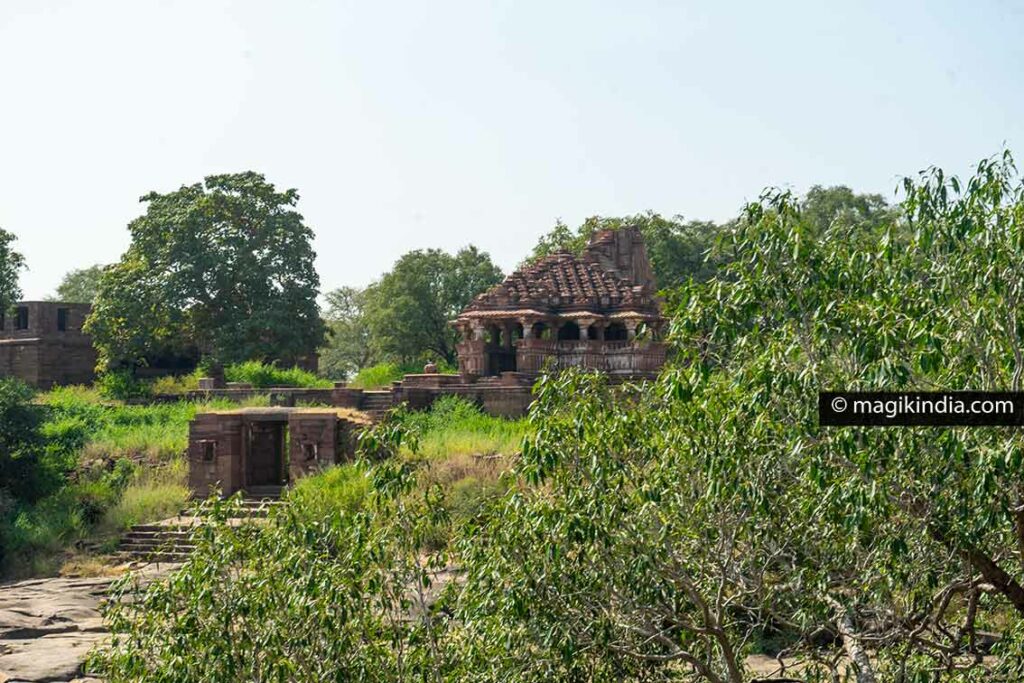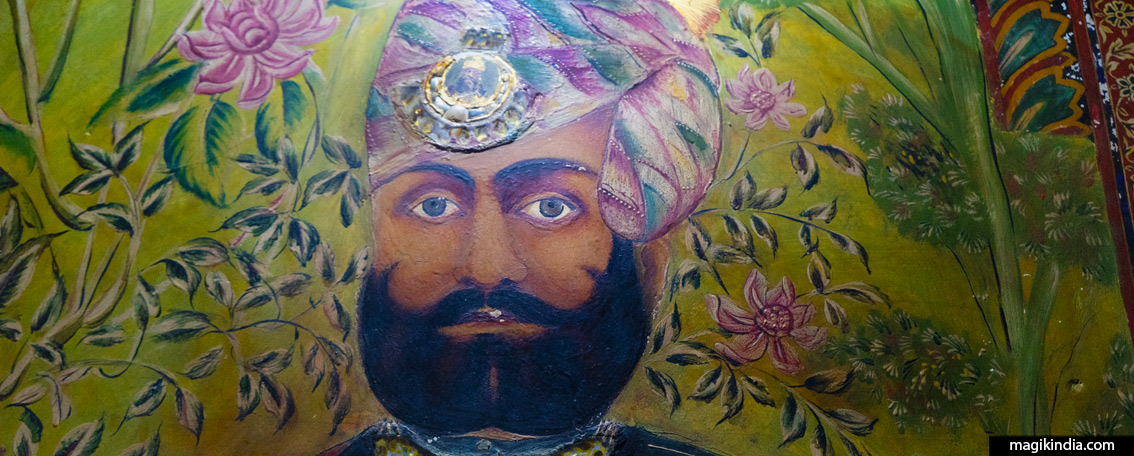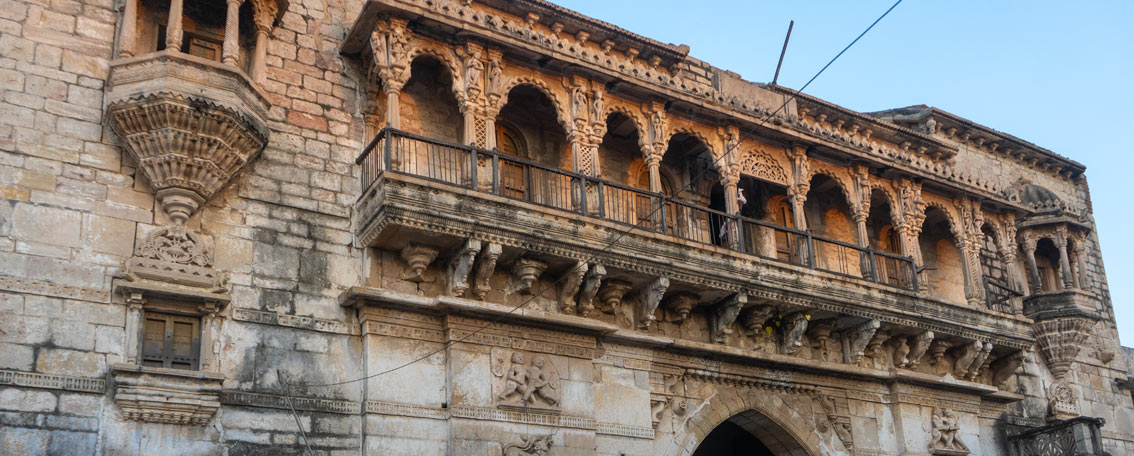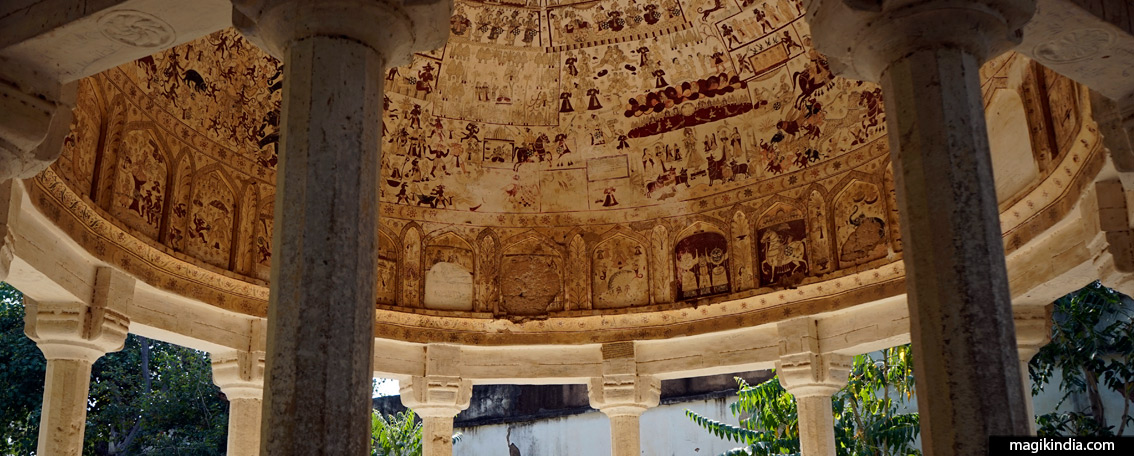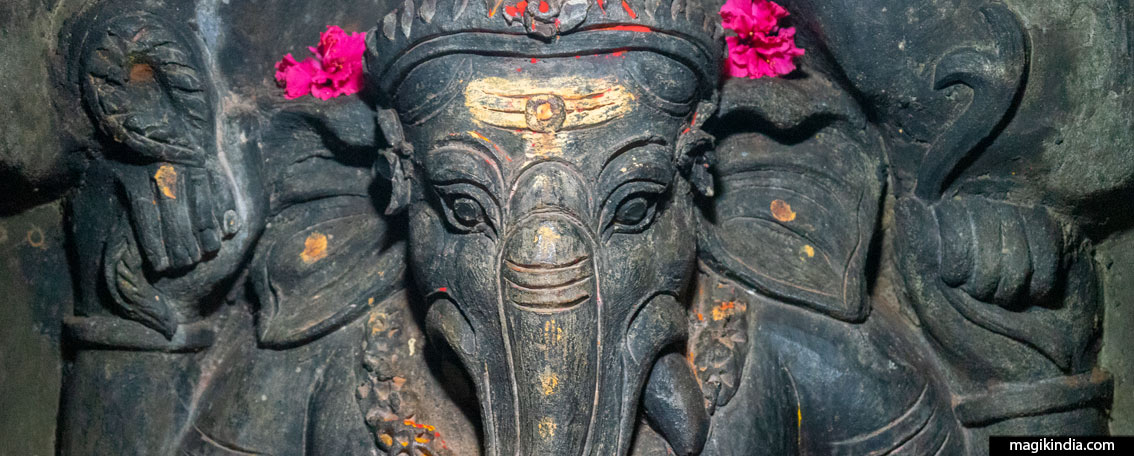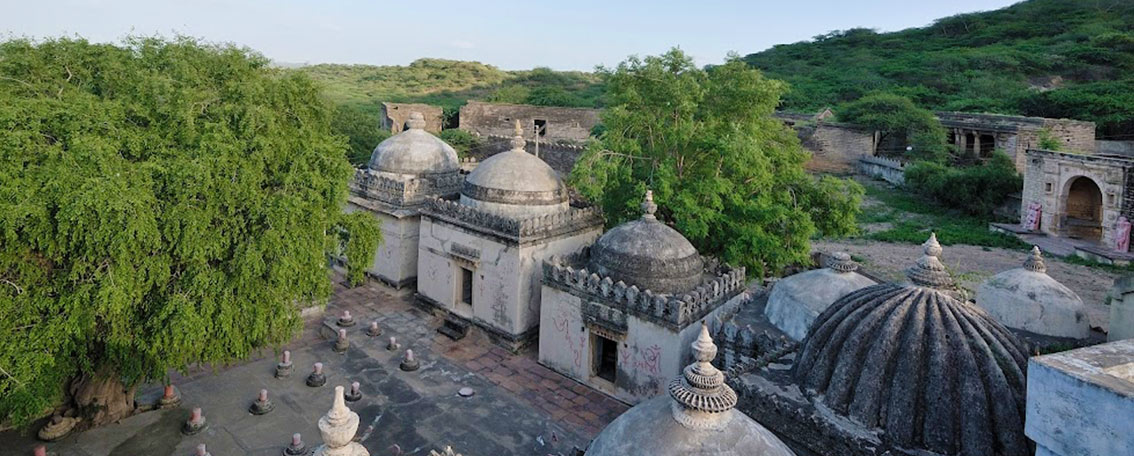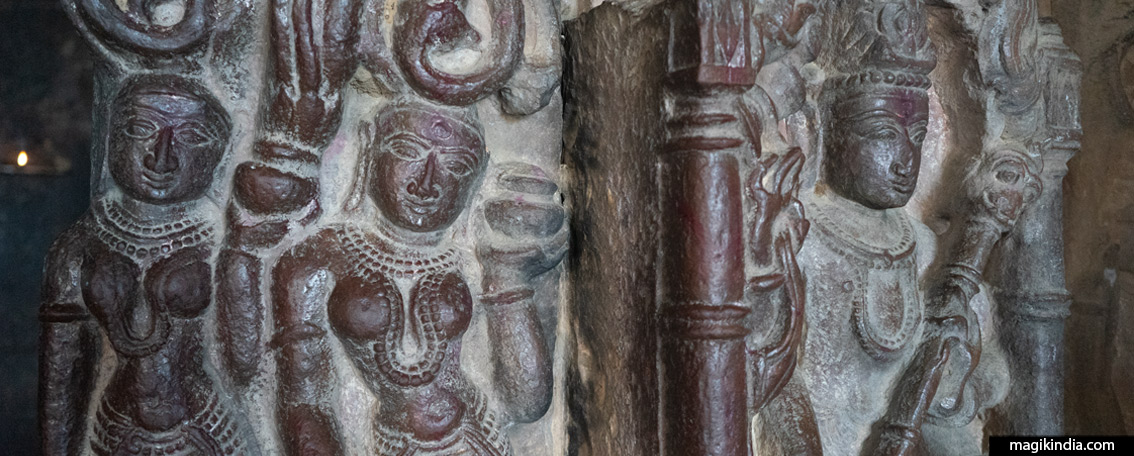
Menal, Shaivite jewel of Rajasthan
Located on the road between Bundi and Chittorgarh, the Menal temple complex is an essential cultural stopover in Rajasthan. This ancient site, in addition to being an architectural gem, was a high place of Shaivism during the reign of the Chahaman sovereigns in the 11th century AD.
Menal takes its name from “Maha Nal” which means “great gorge” in reference to the canyon which divides the site in two. Although not confirmed by records, historians believe that the buildings on the left side of the canyon are attributed to King Someshvar Chahaman of the Shakambhari dynasty, while the single temple with a detached monastery on the other side of the river is associated with his queen, Suhavadevi.
The major site (on the left), comprises a complex of buildings, some in ruins, with the main Mahanaleshvara temple at its centre.
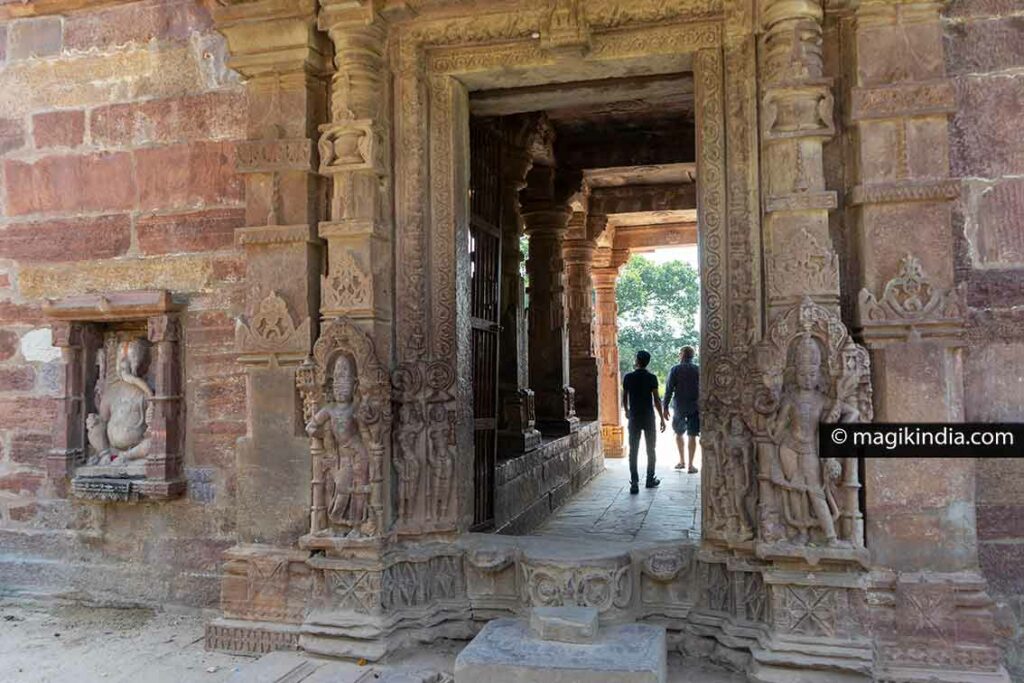
The entrance to the main complex already says a lot about the beauty of the site. It is done through a two-storey mandala-pavilion whose pillars are beautifully carved with various Shaivite deities such as Bhairav, an epitome of the god Shiva in his terrifying form.
Bhairav is often posted at the entrance to temples as a ksetrapala (guardian). He is generally represented naked, carrying the skull of Brahma in one of his 4 or 6 hands (symbol of the vanquished ego) with, at his side, his vahana, the dog Shavan.

On the wall to the left of the entrance, the god Ganesha stands in a stylized form in a seated lalitasana position, his trunk resting on his favorite delicacy, laddoos. God of wisdom and good fortune, the elephant-headed god is always invoked first by Hindu devotees before any ritual.
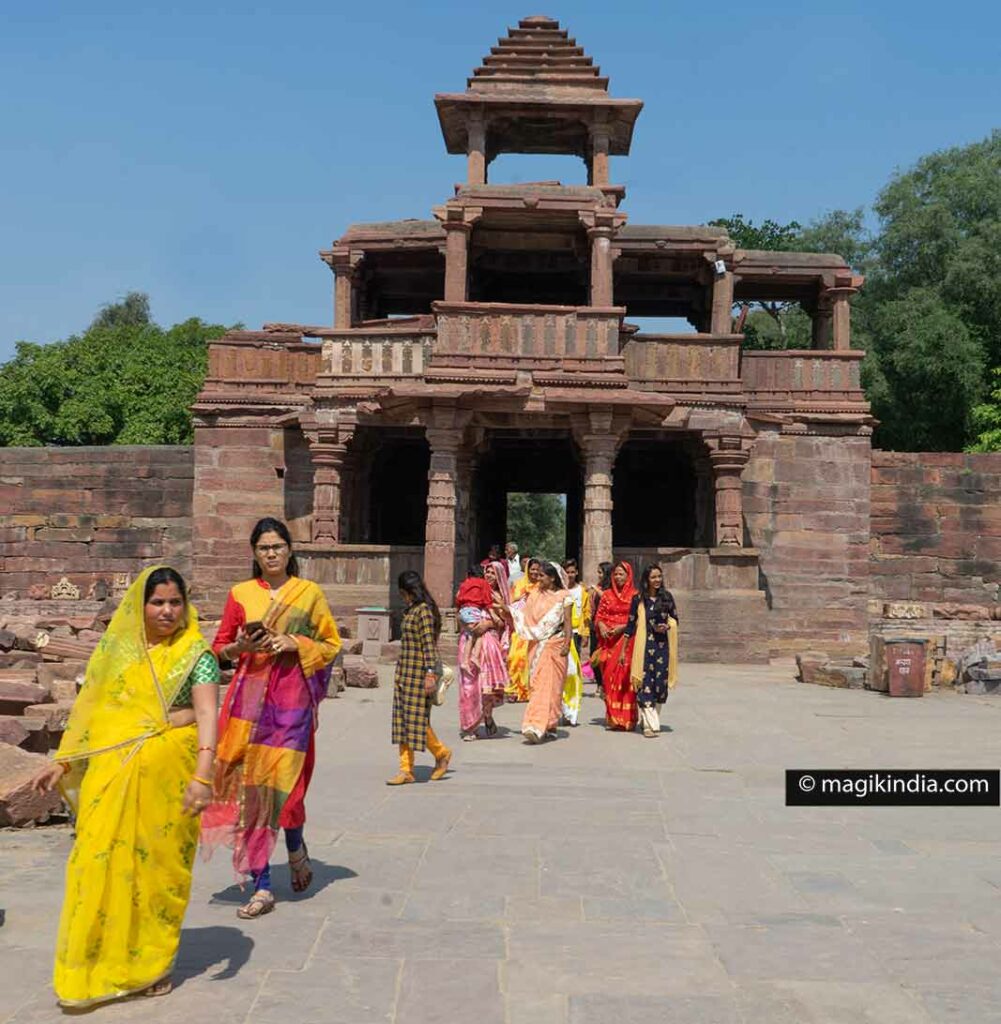
The main Mahanaleshvara temple dating from the 11th century CE is built in the Bhumija style of architecture. The bhumija variant of Nagara architecture (north India) originated in Madhya Pradesh. The temple spire (Sikhara) is divided into quadrants with a flat vertical projection in the center of each side; the quadrants being filled with rows of miniature sikharas up to the top of the spire.
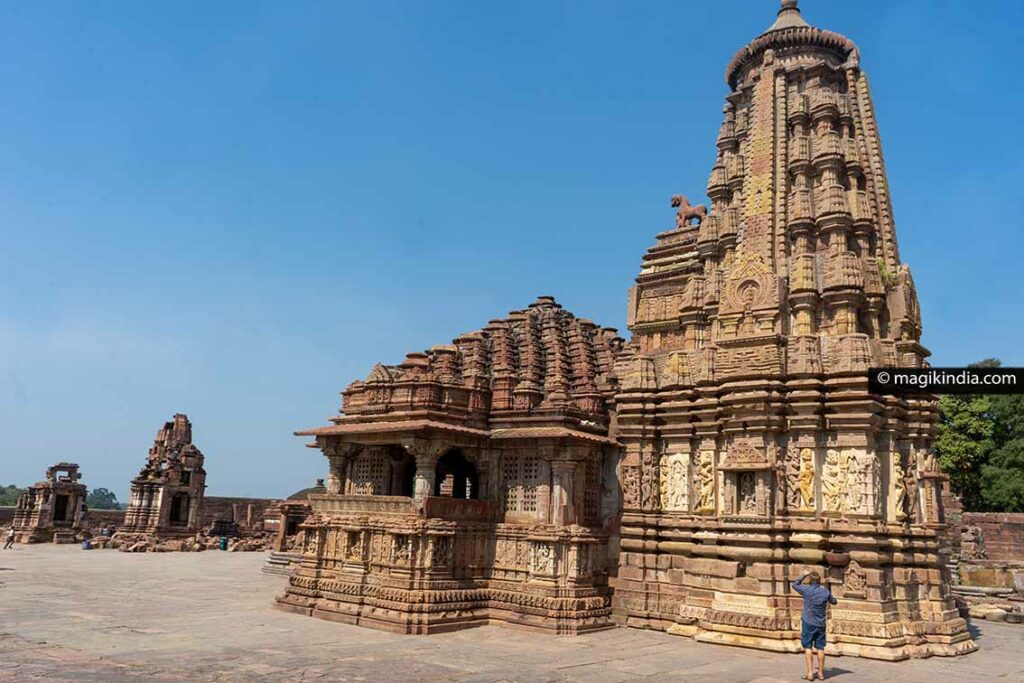
On the mandapa and near the Sikhara, two lions are seated on the head of an elephant signifying the victory of temperance over desire or/and royal authority.
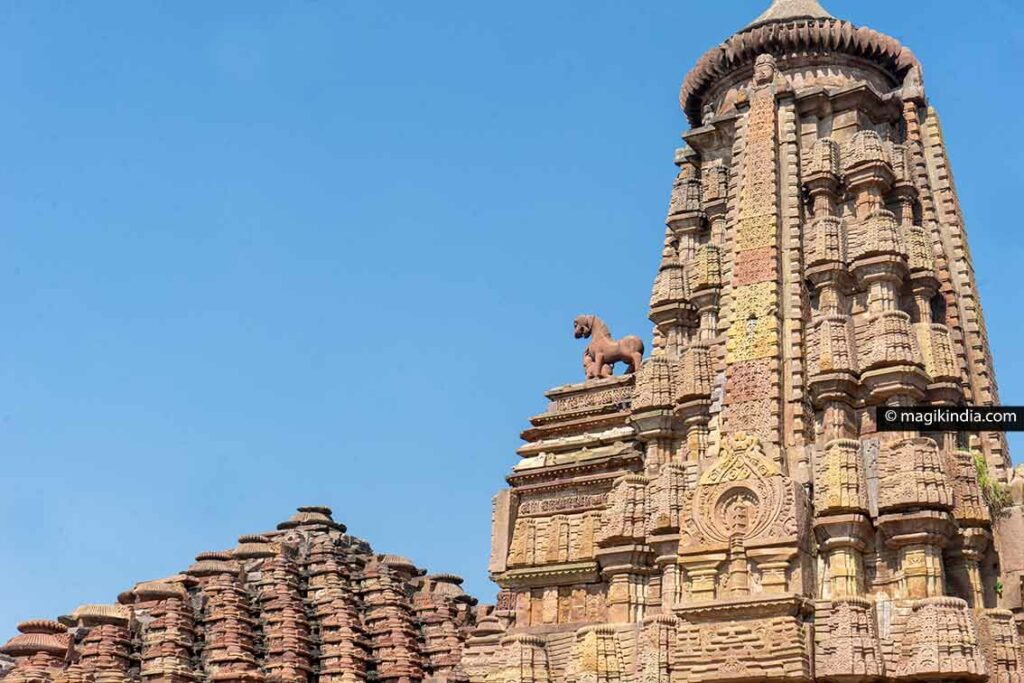
The bas reliefs are equally distinguished with delicate statues of the Hindu pantheon.

As in any temple dedicated to Shiva we find, in front of the entrance of the temple, the divine bull Nandi under a mandapa. Nandi is the “vahana” (vehicle) of Lord Shiva. He is also the guardian deity of Mont Kailash, the abode of Shiva.

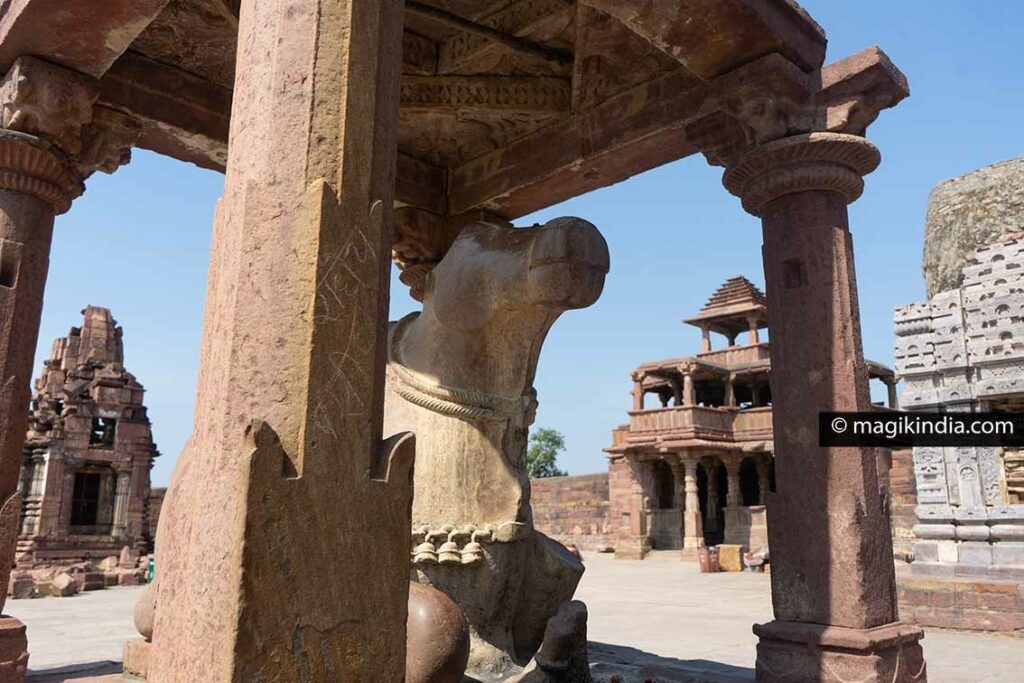
The garbhagriha (Sanctum Sanctorum) houses a simple black sandstone lingam with its yoni base. If the interior of the temple is rather sober, the walls of the garbhagriha are flanked on each side by magnificent statues of Shiva with Apsaraa holding in their hands pots from which spring lotus flowers rolled up on themselves.
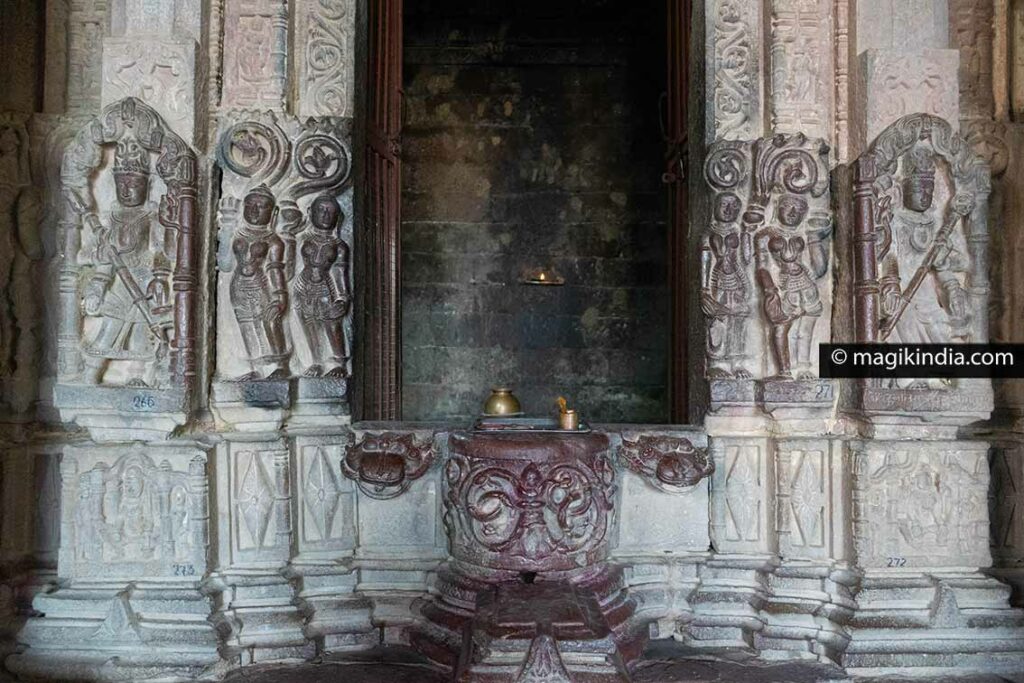
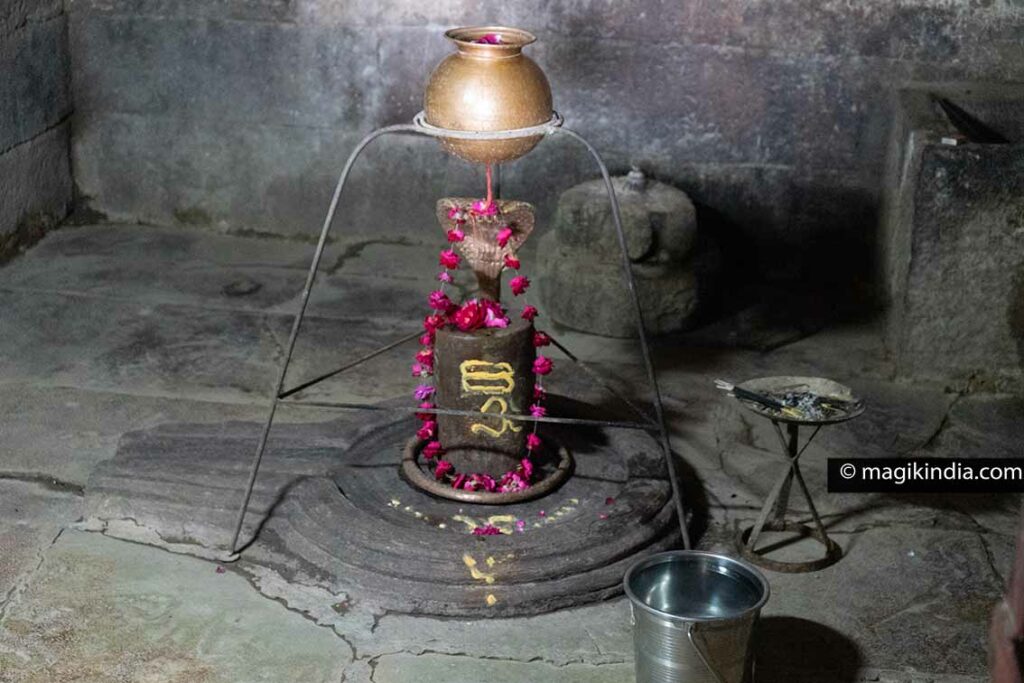
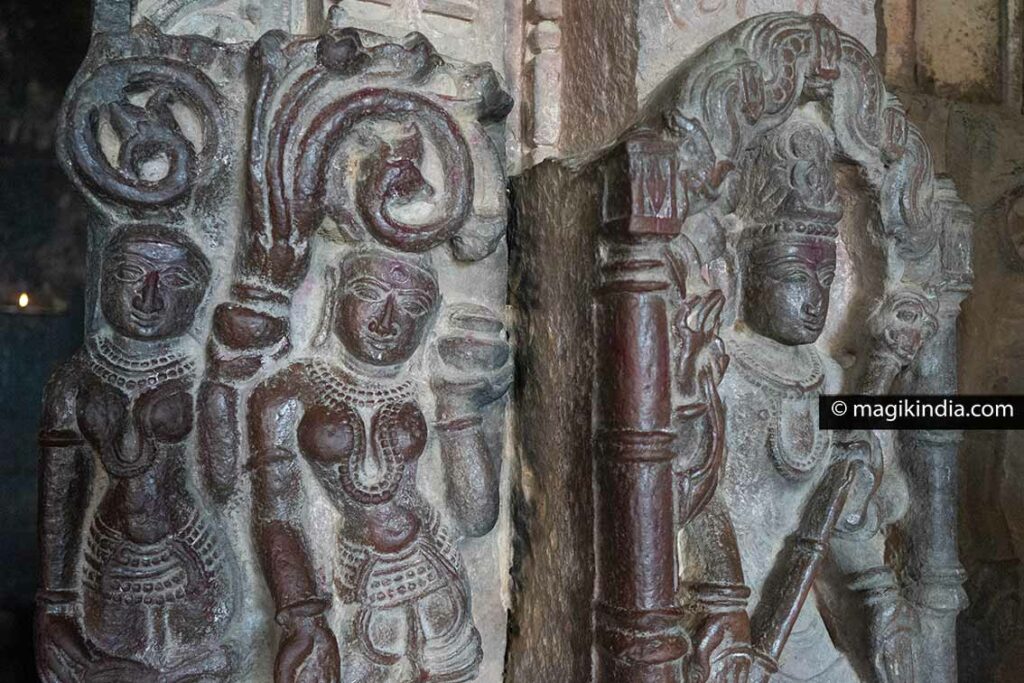
The antiquity of the Menal site is demonstrated by the presence of a temple with two twin shrines located on the left side of the main temple. It dates back to the 8th century AD. Dedicated respectively to the god Ganesha and Gauri, their sikhara is damaged but beautiful carved pillars are still intact with niches dedicated to Lakulisha (a 2nd century CE ascetic, considered the last of the 28 avatars of Shiva), Nataraja (the Shiva cosmic dancer) and Ardhanarisvara (half-Shiva, half-parvati).
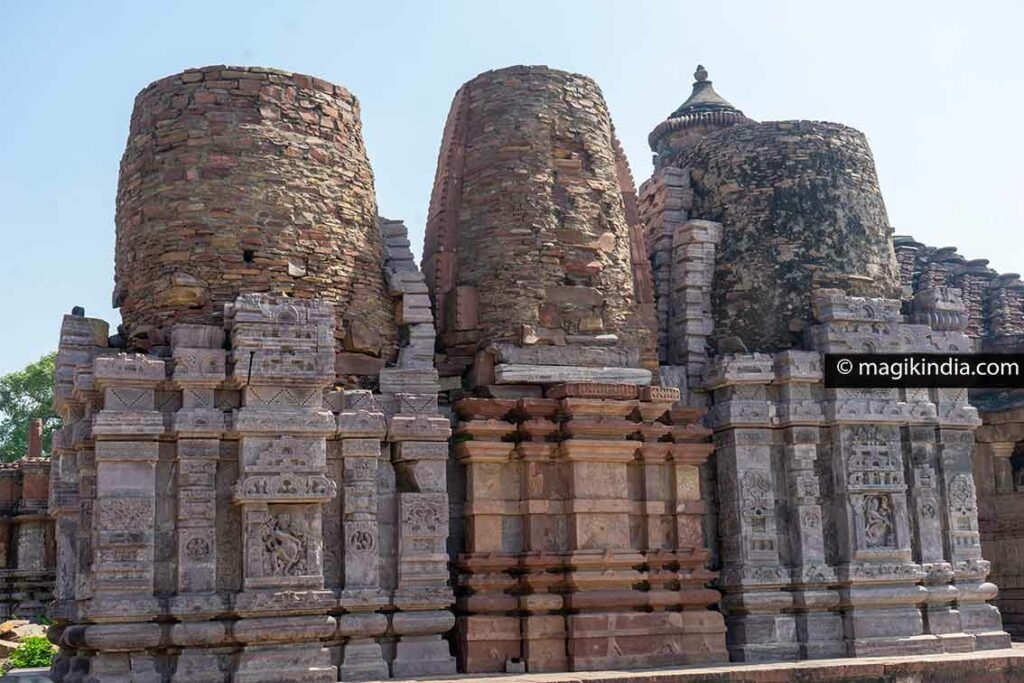
Behind this temple, there is another building dedicated to Shiva with a hypostyle mandapa which was built on the site to serve as a math (monastery). An inscription reports that the matha was built by an ascetic in 1169 CE during the reign of King Chahamanas Prithviraja II.
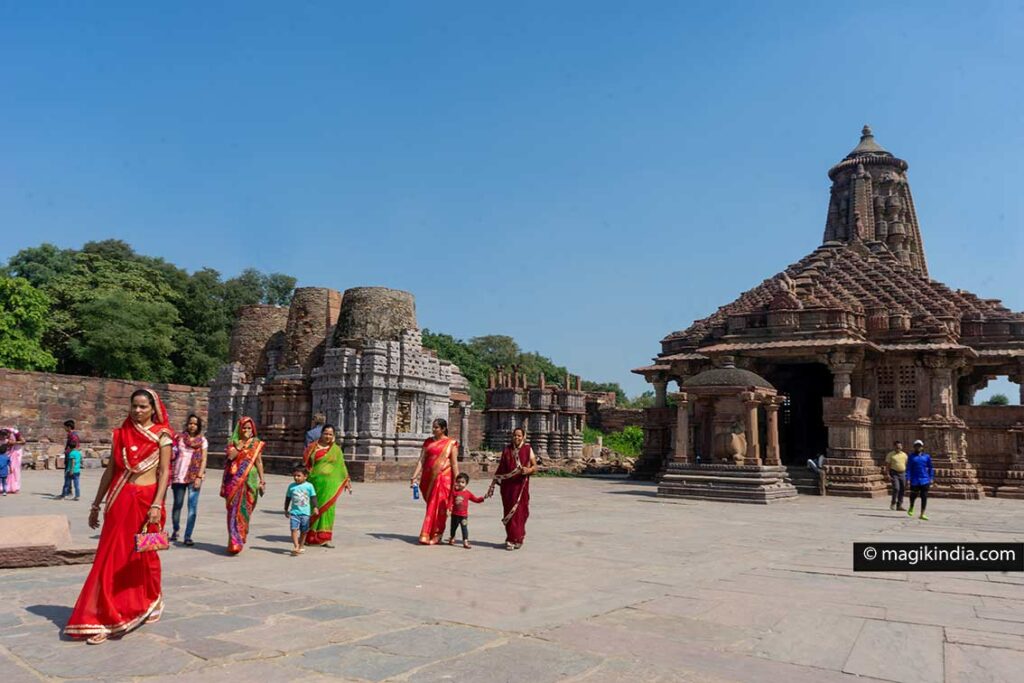
Walking west, we pass small ruined temples and come across the Menali River which flows into a 120 meter gorge. When I visited the temple, in November, the flow of the river was rather low, it’s preferable to see it just after the monsoon for a grandiose spectacle.
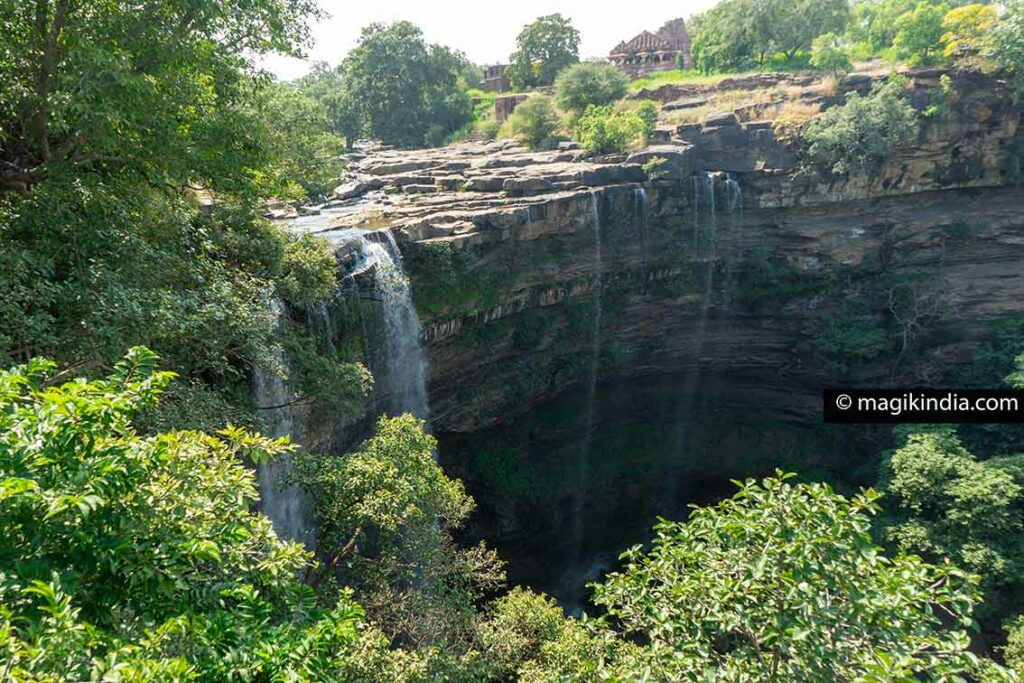
Leaving through another door, we can access the right side of the site, built by Queen Suhavadevi, consisting of a temple to Shiva and a monastery.
